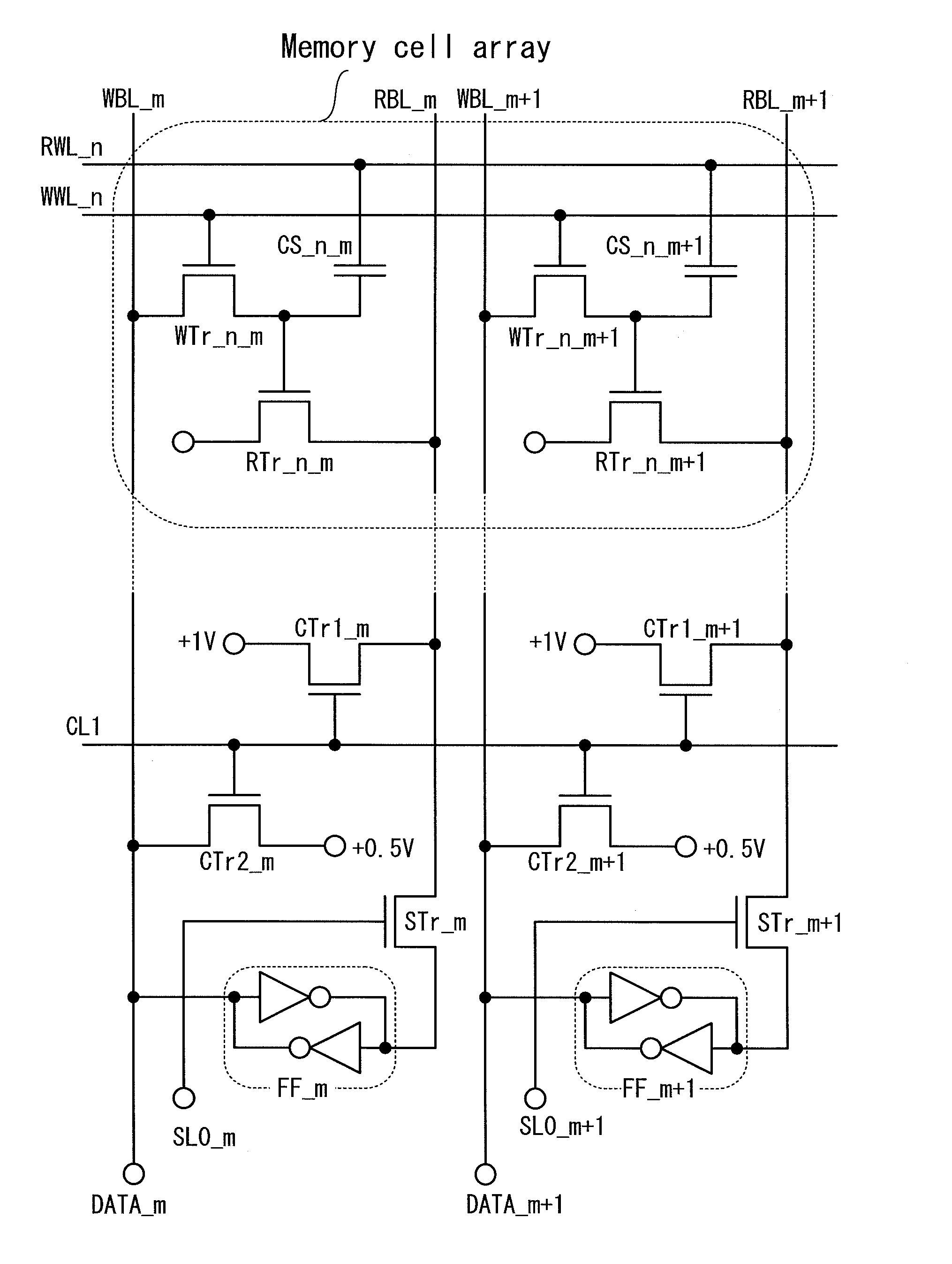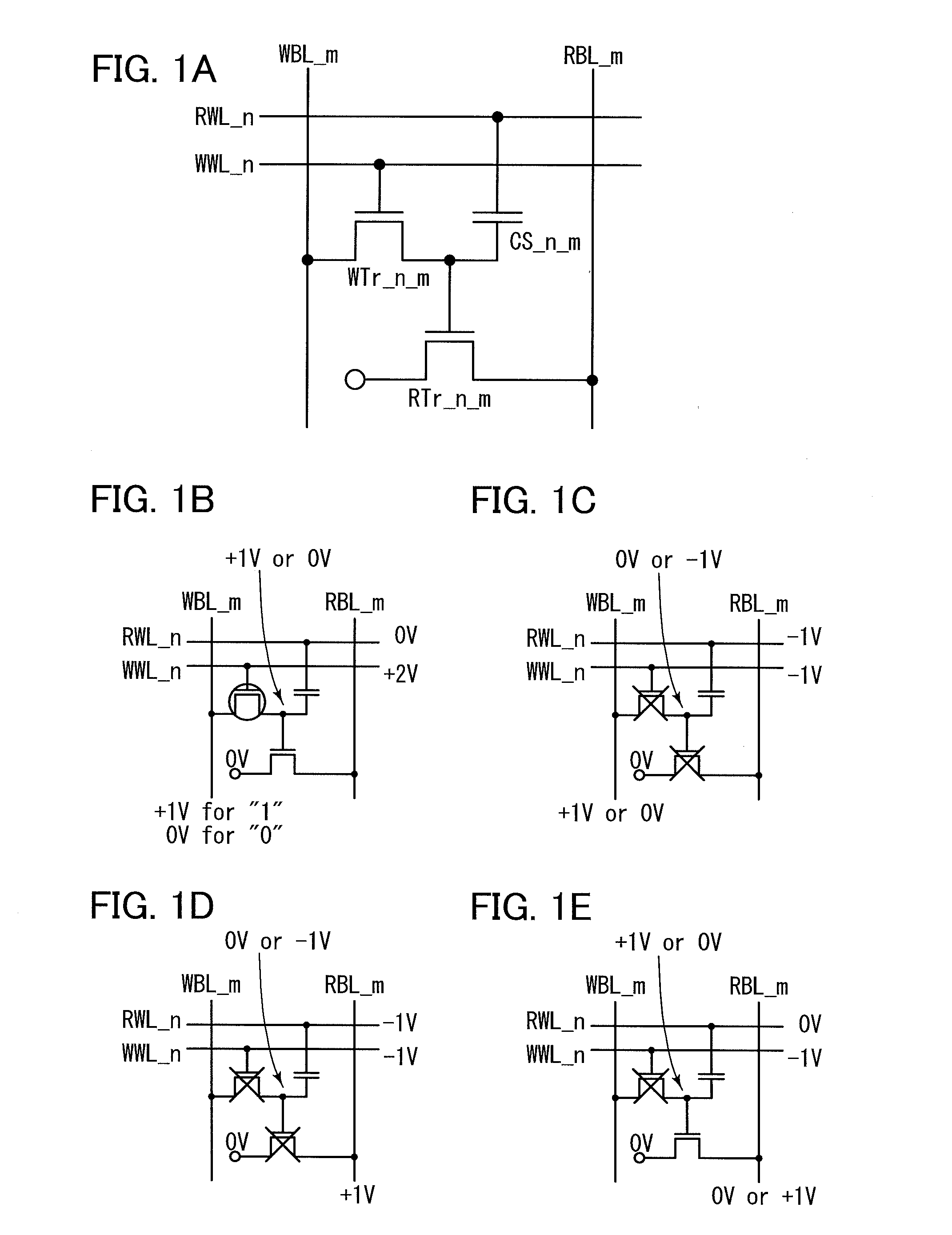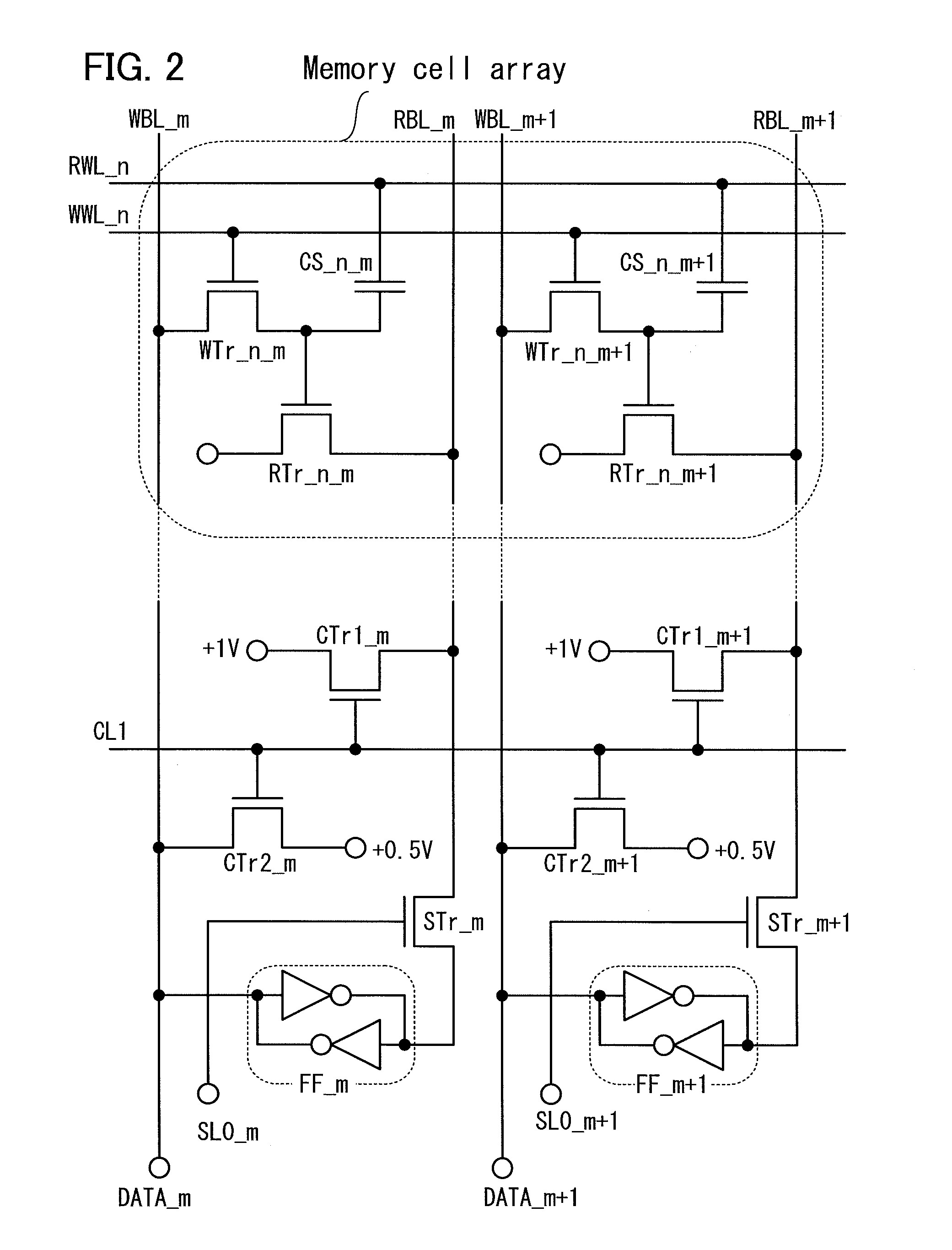Semiconductor memory device and driving method of semiconductor memory device
a memory device and semiconductor technology, applied in the field of memory devices, can solve the problems of tens of seconds, data loss within a relatively short time, and high power consumption even in a standby period, and achieve the effect of reducing the number of necessary wirings and reducing the area occupied by wirings
- Summary
- Abstract
- Description
- Claims
- Application Information
AI Technical Summary
Benefits of technology
Problems solved by technology
Method used
Image
Examples
embodiment 1
[0068]FIG. 1A illustrates a memory cell of this embodiment. Here, n and m are natural numbers of 1 or more. In FIG. 1A, a memory cell including a writing transistor WTr_n_m, a reading transistor RTr_n_m, and a capacitor CS_n_m is illustrated. Here, a source of the writing transistor WTr_n_m is connected to a gate of the reading transistor RTr_n_m and one electrode of the capacitor CS_n_m.
[0069]In the memory cell illustrated in FIG. 1A, the writing transistor WTr_n_m and the reading transistor RTr_n_m are each an n-channel transistor; however, without limitation to this, the following structures can be employed, for example: the writing transistor WTr_n_m and the reading transistor RTr_n_m are each a p-channel transistor; the writing transistor WTr_n_m and the reading transistor RTr_n_m are an n-channel transistor and a p-channel transistor, respectively; and the writing transistor WTr_n_m and the reading transistor RTr_n_m are a p-channel transistor and an n-channel transistor, resp...
embodiment 2
[0103]FIG. 4 is a circuit diagram illustrating part of a memory cell array of a semiconductor memory device in this embodiment, and FIG. 5 is a circuit diagram illustrating part of a driver circuit of a semiconductor memory device in this embodiment. FIGS. 9A to 9E illustrate an example of a driving method of a semiconductor memory device in this embodiment.
[0104]In the semiconductor memory device in this embodiment, as illustrated in FIG. 4, a plurality of memory cells including a memory cell in the (n−1)-th row and the m-th column, a memory cell in the n-th row and the (m−1)-th column, and the like are arranged in a matrix. Here, n and m are each an even number of 2 or more.
[0105]In the memory cell in the n-th row and the (m−1)-th column, a source of a writing transistor WTr_n_m−1, a gate of a reading transistor RTr_n_m−1, and one electrode of a capacitor CS_n_m−1 are connected to each other. In the memory cell in the (n−1)-th row and the m-th column, a source of a writing transis...
embodiment 3
[0130]In this embodiment, examples of a layout and a manufacturing method of the semiconductor memory device described in Embodiment 2 will be described with reference to FIGS. 6A to 6D, FIGS. 7A to 7C, and FIGS. 8A to 8F. FIGS. 6A to 6D and FIGS. 7A to 7C are cross-sectional views illustrating a manufacturing process, and FIGS. 8A to 8F illustrate a layout of components such as main wirings and the like in main layers. Note that line A-B denotes the same position through FIGS. 8A to 8F. Further, dotted lines in FIGS. 8A to 8F denote coordinates, and can be used as reference when a positional relationship between structures in different layers is referred to.
[0131]FIG. 8A illustrates shapes of element isolation insulators 102 provided over a semiconductor substrate. The element isolation insulators 102 have a C-like shape. A continuous region 101a is formed in a direction intersecting with line A-B in the drawing, and this region is to be an impurity region 104a functioning as a wir...
PUM
| Property | Measurement | Unit |
|---|---|---|
| capacitance | aaaaa | aaaaa |
| aspect ratio | aaaaa | aaaaa |
| current | aaaaa | aaaaa |
Abstract
Description
Claims
Application Information
 Login to View More
Login to View More - R&D
- Intellectual Property
- Life Sciences
- Materials
- Tech Scout
- Unparalleled Data Quality
- Higher Quality Content
- 60% Fewer Hallucinations
Browse by: Latest US Patents, China's latest patents, Technical Efficacy Thesaurus, Application Domain, Technology Topic, Popular Technical Reports.
© 2025 PatSnap. All rights reserved.Legal|Privacy policy|Modern Slavery Act Transparency Statement|Sitemap|About US| Contact US: help@patsnap.com



